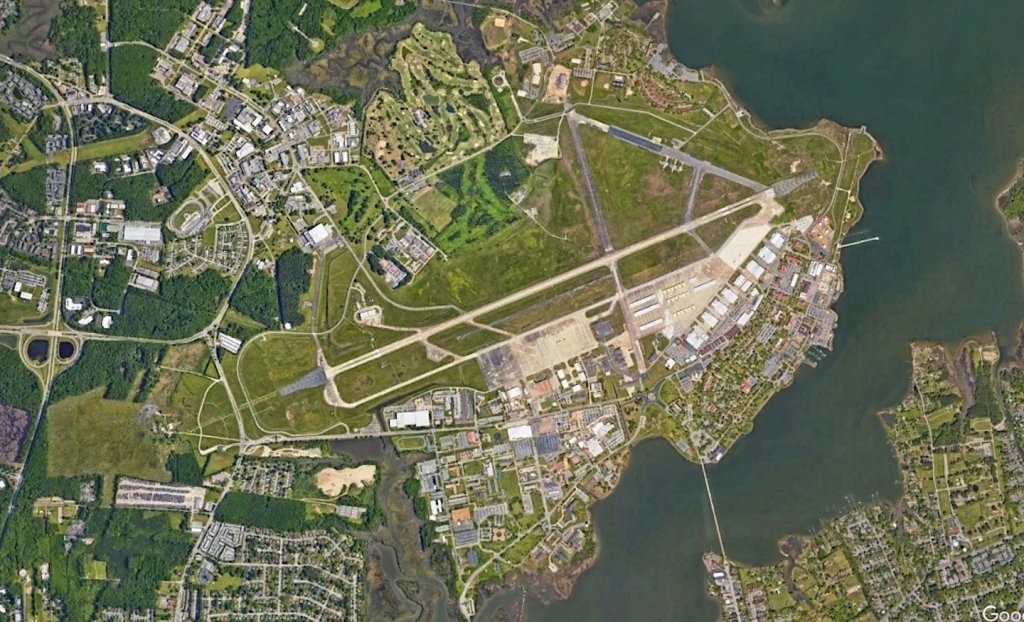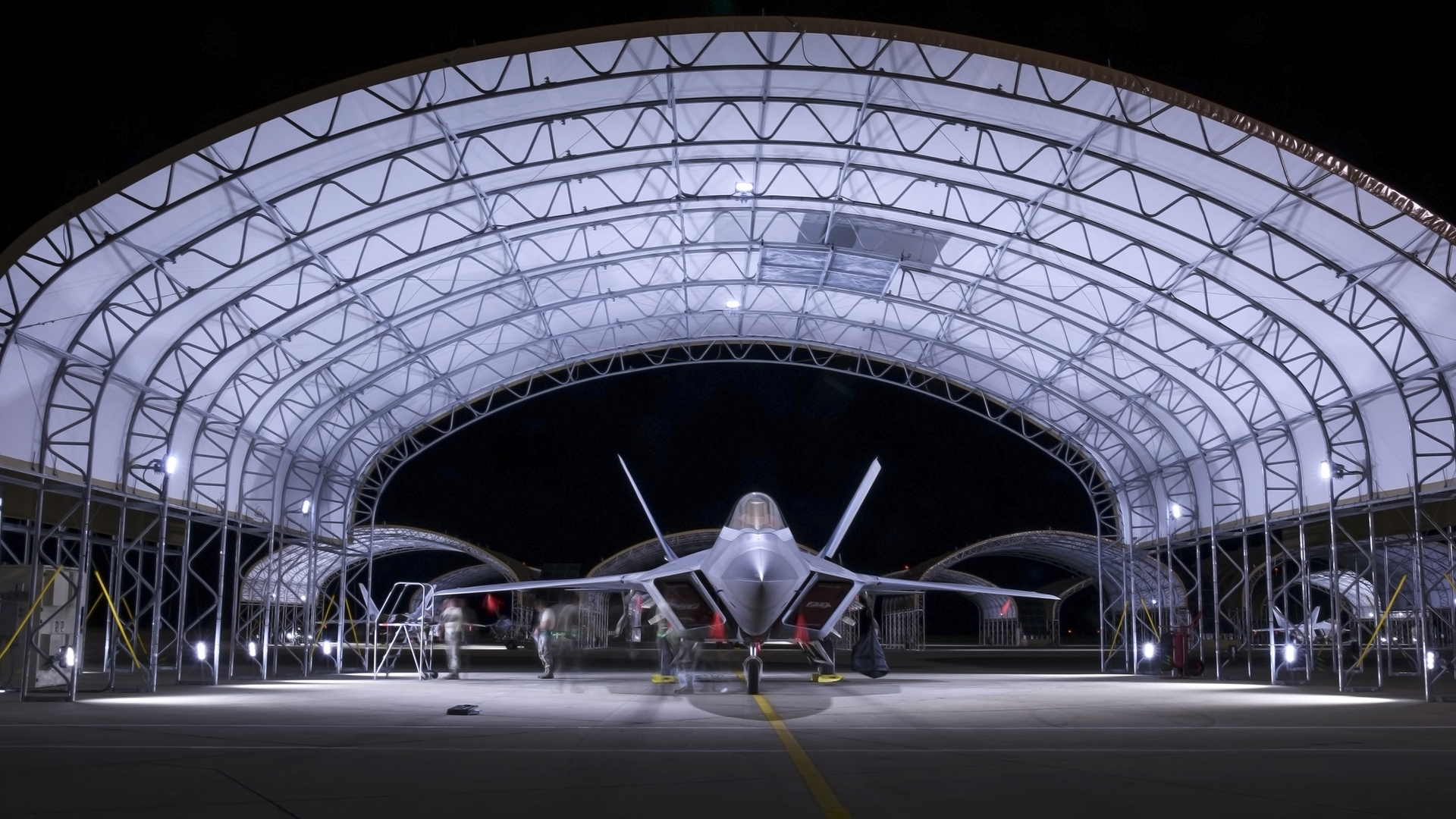The incursions of mystery drones over Langley Air Force Base in Virginia – which we were the first to report back in March – has sparked a lot of questions about who flew them and how the U.S. military responded to them and will do so in similar instances in the future. Drone flights over sensitive military installations, warning areas, naval warships, and critical national infrastructure sites is a major issue The War Zone has raised for years. Today we had a chance to ask the general responsible for defending America’s airspace about the issue and the Langley incursions, in particular.
Speaking to The War Zone along with a small group of reporters at Peterson Space Force Base in Colorado Springs, the commander of U.S. Northern Command (NORTHCOM) and the joint U.S.-Canadian North American Aerospace Defense Command (NORAD) Air Force Gen. Gregory M. Guillot offered few specifics about the incursions but talked about some of the steps NORTHCOM is taking in the wake of those incidents.

“The only thing I can tell you about the Langley drones is roughly the number and roughly the altitude,” he said when we asked him about the exact characteristics and configurations of those drones. He did not elaborate. However, earlier this month, Air Force Gen. Mark Kelly told The Wall Street Journal that at least one of the drones was “roughly 20 feet long and flying at more than 100 miles an hour, at an altitude of roughly 3,000 to 4,000 feet. Other drones followed, one by one, sounding in the distance like a parade of lawn mowers.”
Replying to our question, Guillot told us he did not know if they were tracked back to their recovery point or whether they could have been launched by a vessel off the coast.
The Langley incursions were among more than 600 reported over U.S. military installations since 2022, NORAD stated Tuesday. In the wake of the rash of drone activity over Langley AFB, NORTHCOM was tasked by the Joint Chiefs of Staff to look at drone incursions across the U.S., Guillot said.
“I saw that NORAD’s responsibility for countering UAS was very limited to something that would be an attack of national consequence,” he explained not the small drones as seen over Langley and elsewhere. NORTHCOM, meanwhile, has no responsibility or authority to take action, because the services are charged with securing their facilities.
As part of his assessment, Guillot examined the defensive capabilities Langley had at the time, what was brought in, “and then how could they operate in that system.”
That led to the creation of a counter-drone experiment this week called Falcon Peak 2025, in which several companies will offer their solutions to counter these incursions. We will go into more detail on these possible solutions after we see some of the systems in use on Wednesday.
After taking the reins at both commands in February, Guillot initiated a 90-day assessment of what role they could play in dealing with the kind of small drones that flew over Langley, That situation formed the centerpiece of his assessment, he testified before Congress in March.

One finding he talked about Tuesday was that NORTHCOM should coordinate the military and government’s response to small drone incursions.
“I want to make sure that we have a solid foundation for the DOD and the interagency, and I also want to put an umbrella over the top where someone’s looking out to share best practices and ensure machine-to-machine linkage, so we can share that type of information,” Guillot remarked.
In addition, he wants to “work with industry to make sure that we’re building the right kind of systems that we need to defeat the threats that we’re seeing, not only now, but expect to see into the future.”
Guillot said that he “coordinates frequently” with the recently formed All-domain Anomaly Resolution Office (AARO), the Pentagon’s unit tracking what used to be known as UFOs. In addition, he remains confident that the incursions reported over installations are small drones as opposed to something that can’t be identified.
As we have frequently reported, there have been unidentified drone incursions for years over U.S. military installations, warning areas, and critical government facilities. Among them were a very similar repeated rashes of claimed drone sightings in Colorado in 2020 in an area where many of America’s ICBMs are based. Another took place at the Palo Verde nuclear facility in Arizona in 2019.
Also in 2019, drones swarmed over a U.S. Navy exercise taking place 100 miles off the coast of California, raising concerns that an adversary was trying to suck up critical intelligence, including very sensitive electronic and signals emissions of America’s most advanced air defense and command and control systems.

More recently, we were the first to write about drone flights over the highly-secure Plant 42 in Palmdale California that were so concerning a temporary flight restriction was issued for the airspace over the facility.
Asked about why the military is taking this matter more seriously now, Guillot suggested the reason is technology-based.
“We have more systems that can detect and track them with fidelity that shows the range and altitude that they are near either critical infrastructure or a base.”
Guillot did acknowledge systems have been in place to detect and track objects for years and that there were lessons learned from the Chinese surveillance balloon that passed over parts of the United States and Canada in February 2023 before being shot down
“For years, we’ve had clutter reduction capabilities, moving target indicators that can find something moving in clutter that’s very important to us,” he told another reporter at the roundtable. “And I think, as we saw with the balloon, what the clutter gate is, you know, so you could reduce anything below a certain speed, where we have that set, and then, the elevation, how high we look, is certainly something that I think we’ve learned over the last several years.”
You can read more about NORAD’s admission that its radars were not properly configured to spot and track non-traditional aircraft following the Chinese balloon incident here and here.
While he expressed confidence in the ability to detect and track larger drones and crewed aircraft, Guillot said there is a need to improve those capabilities for smaller ones.
“…the purpose of this demonstration is to improve our ability to detect and track the Group One and Group Twos, which are much smaller, fly lower, which puts them in that clutter range… “
We also asked about whether the U.S. is still considering installing surface-to-air missile defense systems around military installations and critical locales (beyond Washington D.C.) and whether the umbrella provided almost entirely by a relatively small cadre on-alert fighter aircraft is still the best way to protect American skies.

The military has to take a “layered approach” because the “threat is layered,” Guillot enunciated.
“I think there’s certainly a role for fighters. There’s a role for non-kinetic or low-collateral kinetic capabilities that would be at the smaller end. And then I’m a big proponent for advances in directed energy, laser and high power microwave. So those non-kinetic capabilities that bring a kinetic result of bringing down the systems, and I think it has to be layered in today’s today’s threat.”
“The challenge that we see today is that it’s not a single competitor or adversary that threatens us,” Guillot added. “It’s not a single domain that threatens us, and it’s not a single avenue approach. So the only way to get after multiple potential adversaries or competitors in all domains from all avenues of approach is to have a layered system that includes all of the things that you talked about.”
Despite all the evidence that we have brought up over the years that points to foreign actors using drones to collect intelligence about U.S. military tactics, techniques, and procedures, Guillot insisted he does not know of any “organized or unorganized foreign nexus.”
He answered “no,” when we asked him if he is seeing patterns and joint activity around military installations and in warning areas that point to a systemic and ongoing operation by an adversary.
“…but that is something that we look very closely at,” he declared. “I haven’t seen it yet, but I think one of the responsibilities of this job is to always look for or assume the worst, the biggest, the most likely course of action and the most dangerous course of action. So I’m always looking for any sort of foreign nexus. But I have not seen [and] I do not know of any organized or unorganized foreign nexus.”
Underscoring the myriad aerial threats his command must handle, Guillot cut the interview short and literally ran out of the room to deal with an immediate situation.
The reason, we later learned, was a civilian aircraft violated temporary flight restrictions imposed over Baltimore for the visit of VIP, NORAD spokesman John Cornelio told The War Zone. It turns out the VIP was President Joe Biden.
Given the damage that small weaponized drones can do and their extremely rapid proliferation, as we have seen in Ukraine, the Middle East, and even near our own borders from cartels, combatting these threats will take up an increasing amount of resources and investment.
Case in point, the Air Force is now seeking extra protection for its aircraft on the ground from such attacks using shelters and other physical countermeasures, and especially at Langley AFB.
Contact the author: howard@thewarzone.com
